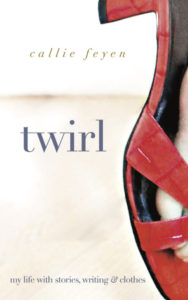“This looks like an easy book,” a second grader I’ll call Dawn tells me as she pages through Jean Ready’s All Through My Town. She points to the words on the page and looks at me with pursed lips. “See?” she says, tapping the paper. She’s not impressed with the number of words on the page — no more than ten — and also the colorful pictures. “We’ll be done with this story soon, Mrs. Feyen,” she says, placing her elbow on the table, fisting her palm and then resting her head on it. “And then what?”
We’ve been working together for a few weeks now, and it always begins like this. By second grade students understand what I represent when I come to their classroom. They’re not like the kindergarteners or even the first graders who jump and climb on me as a greeting. “You’re working with me today, right?” they’ll say gleefully. Second graders will use the exact same words, but their tone is much different.
“Well,” I start, pulling the little chair that I’m much too big for up to the table next to her and banging my knees in the process. “Let’s begin and see what happens.”
Dawn sighs. I rub my knees. She turns the cover over and begins.
It’s a story about what happens in a town throughout the day and into the evening. It’s a story about observations: people wake, bread bakes, buses pick up, school bells ring.
“This story gets more complicated,” Dawn tells me.
“It does?” I ask. I thought it was pretty straightforward.
“Yeah, look,” she says and points to the pictures. She is correct. The day grows busier, rushed and indeed, more complicated. I hadn’t noticed when I prepared the lesson. I was only paying attention to the words.
“But see?” Dawn says, It’s the same person telling the story.”
She points to the bunny who is on each page, narrating. Something else I missed.
“So things get more complicated,” I repeat back to Dawn and point to the bunny, “but she can still point out what’s going on.”
I’m here to help Dawn read. Though there aren’t many words on the page, she needs help sounding out most of them. However, this seems equally important: the more complicated a story becomes, the more important it is to continue to observe. I wonder if that’s how we endure mystery. I wonder if that’s how we enjoy mystery.
I take out a piece of paper, and fold it in half. I write “All Through My Town,” on one side, and on the other side I write “My Town.”
“Let’s make a list of what the bunny saw in the story.” I hold out two pencils: a black one, and a light and dark green striped one. Dawn takes the green one because, “It looks like mint.”
She writes:
Bread is baking
seeding, sowing,
brushing, shaving
reading, singing
red lights flashing
It sounds like poetry to me, and I want Dawn to keep going, but she stops and says, “I saw an ambulance this morning.” I wonder if writing “red lights flashing” prompted Dawn’s memory of her own day. And isn’t that what reading is supposed to do — connect us to our own lives and the lives of others?
“Write that down,” I tell her and point to the “My Town” column. Dawn sounds out “ambulance” across the page.
“What else?” I ask.
“Moving leaves,” she says and leans close to the paper to write.
“And a raccoon eating,” she whispers to me, smiling.
“Write that, too,” I whisper back.
Ambulance and
moving leaves
a raccoon eating
I think this sounds like poetry, too.
It is time for me to go. Dawn hands me the mint pencil. “Will you come back?” she asks as I snap my pencil box shut. Her tone is neither hopeful nor weary when she asks.
“Yes,” I say.
“For me?” she asks, and I understand she’s making observations as this story grows more complicated.
“Yes,” I say again.
Dawn nods and her little ponytail jumps in response.
We push our chairs back from the table at the same time. Dawn moves with ease, but I chug back and wobble in the chair. I bang my knees again. A few students turn at my commotion.
“I don’t think I’ll ever get used to this,” I whisper to the 8-year-olds around me. They say nothing. Dawn has already gone back to her desk and opened her silent reading book: a Big Nate story.
I figure out a way to stand, collect my stories, and quietly leave the classroom, deciding that I’ll never get used to the infinite amount of mysteries there are waiting to be turned over each day.
I don’t think I want to get used to them, either.
Try It
This week take time to write observations throughout your day. At the day’s end look over your list and see if you can create a poem from it.
Featured Poem
Thanks to everyone who participated in last week’s poetry prompt. Here’s one from Richard Maxson we enjoyed:
Eigengrau
The darkness holds you,
like a lost son, a moon
just born, fragile light,
wandering through stars.
You, in the alleyway room
the street lamps pass
in their rounds, where
they cannot bend a beam,
a closet door crevasse—
there, something looms
in a mind of gray-in-black,
a lack, a shapelessness
dancing in the slice
of sleep, waiting for a dream.
In the dust of eigengrau
she floats, like scatter ray,
a swirl of horns and teeth,
and eyes that have no face
from which to stare, join
shuffles sounding in the hall.
Do you whimper, do you rise?
Is it long ‘til morning comes?
Will she be here in the light,
or swiftly follow if you run?
Photo by Philipp Antar Creative Commons, via Flickr. Post by Callie Feyen.
Browse more poetry prompts
A Writer’s Dream Book
“Callie Feyen has such a knack for telling personal stories that transcend her own life. In my years in publishing, I’ve seen how hard that is—but she makes it seem effortless, and her book is such a pleasure. It’s funny, it’s warm, it’s enlightening. Callie writes about two of the most important things in life—books and clothes—in utterly delightful and truly moving ways. I’m impressed by how non-gimmicky and fresh her writing is. I love this book.”
—Sarah Smith, Executive Editor Prevention magazine; former Executive Editor Redbook magazine
- Poetry Prompt: Courage to Follow - July 24, 2023
- Poetry Prompt: Being a Pilgrim and a Martha Stewart Homemaker - July 10, 2023
- Poetry Prompt: Monarch Butterfly’s Wildflower - June 19, 2023


Katie says
sprinkles on the windshield
leaves underfoot
chalky gray sky
heat on
frost warning
pumpkins line steps
hammock down
wind chimes in
moon half full
L.L. Barkat says
Oh, I especially like “wind chimes in/moon half full,” Katie. 🙂
Katie says
Thank you, Laura:)
Here’s one from yesterday:
bits of stained glass slip from trees
jackets turn to coats
deck plants move indoors
push broom clears driveway
aroma of hot cocoa
warmth of mugs
sorghum fields cut
wind sweeps roofs
lonely birdbath
Katie says
apricot-orange sunset
cerulean streaks of blue
white cotton, smudgy gray
condense on horizon
toward close of day
palest chalky sphere
creeps higher up deepening sky
until darkness reveals glimmers
celestial bodies distant
beyond above, farther than high
cosmic winter clusters
wondrous to behold
Cassiopeia, Perseus
constellations, star groups
brighter even than gold
galaxies galore
cosmos building blocks
red giants and white dwarfs
one hundred times wider
than the Sun; much smaller
supernovas to quasars
pulsars to black holes
interstellar clouds
eclipses, comets, planets
asteroids to zenith.